Richard Blackford: 7 Hokusai Miniatures
Katsushika Hokusai (1760-1849) was an artist in ukiyo-e (pictures of the floating world). This genre of woodblock prints and paintings shows pictures of all kinds of subjects: from beautiful women to caricatures of actors and sumo wrestlers, landscapes, and scenes from history. They were made from the 17th to the 19th century and Hokusai was one of its early innovators and masters.
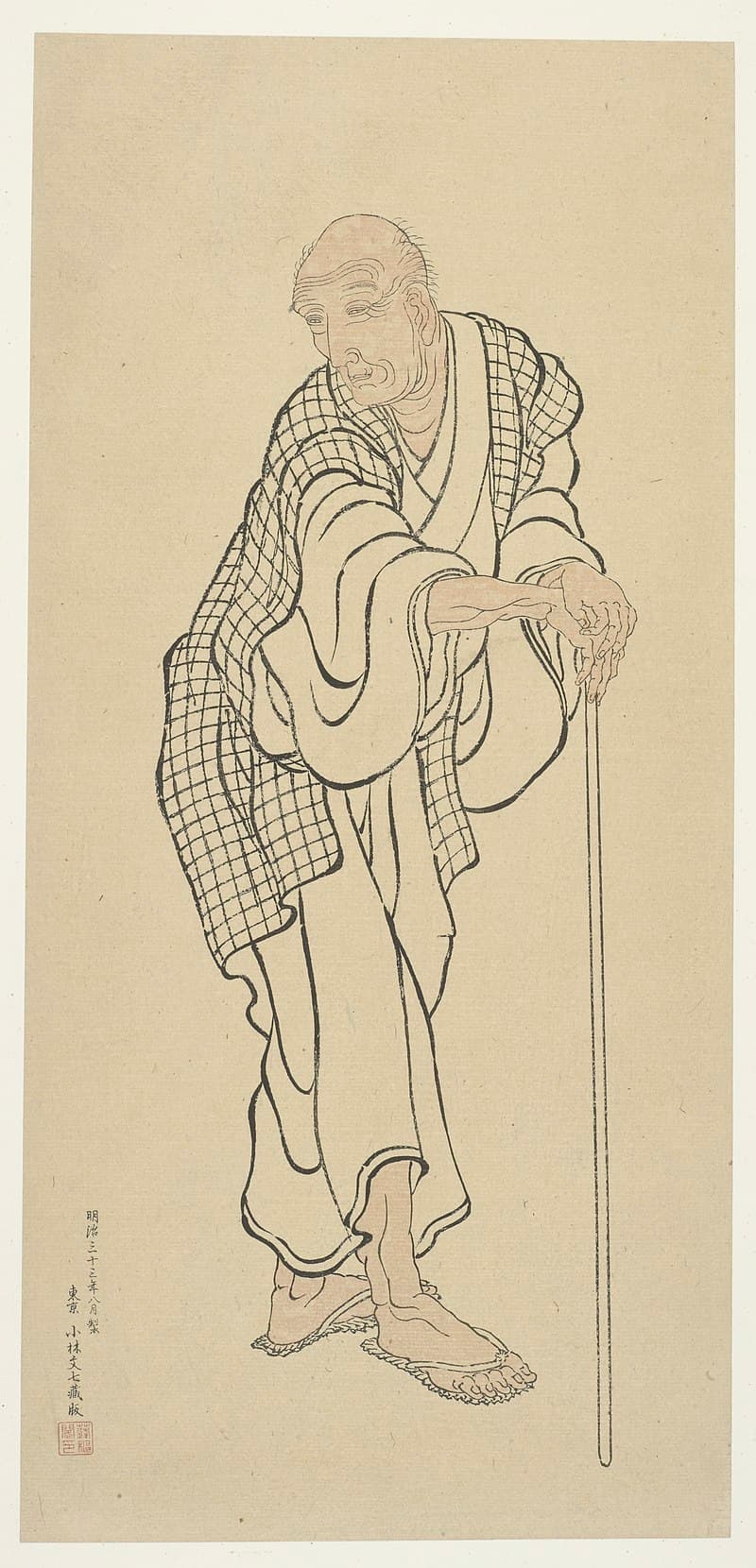
Hokusai: Hokusai as an old man
Many of Hokusai’s prints are still some of the most famous Japanese artworks known internationally, such as the Great Wave off Kanagawa, Red Fuji, and his series Thirty-Six Views of Mount Fuji.
British composer Richard Blackford chose 7 works by Hokusai to set for string quartet, framing the series with two images of Mount Fuji.

Richard Blackford
The first uses an alternative title of the Red Fuji woodcut: Mount Fuji In Clear Weather. In Hokusai’s picture, Mount Fuji is unusually deep red with snow tracing lines down from its asymmetrical peak. The clouds show it’s autumn and the colour of the mountain comes from the sun striking it with the first light in the morning.
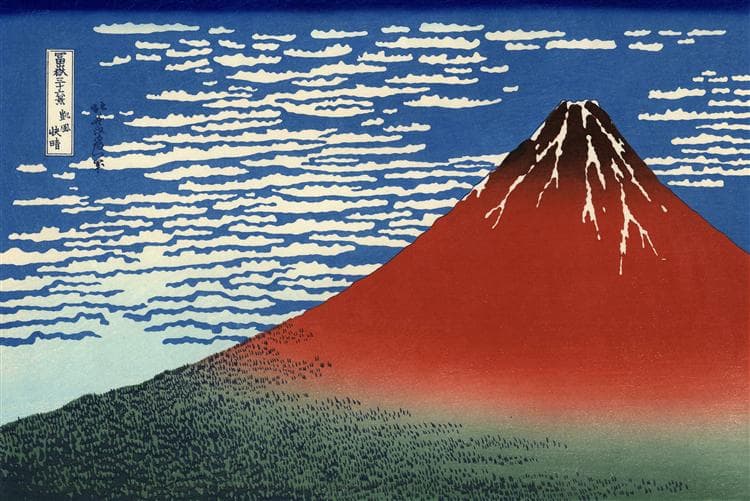
Hokusai: Red Fuji (Mount Fuji in Clear Weather), 1831
In his quartet, Blackford starts by giving us the measure of the massive mountain.
Richard Blackford: 7 Hokusai Miniatures – No. 1 Mount Fuji In Clear Weather (Solem Quartet)
In his series Thirty-Six Views of Mount Fuji, the silhouette of the mountain, revealed when winds blew the clouds away, shows another effect of the strong winds: It catches travellers unawares. Papers are blown away, hats take the air, and strong efforts must be made to simply stay on the road. The grasses bend, the trees thrash and lose leaves, and all is chaos. The Tōkaidō highway borders rice fields so one slip will result in a watery fall.
Richard Blackford: 7 Hokusai Miniatures – No. 2 A Sudden Gust of Wind. dynamic conclusion (Solem Quartet)
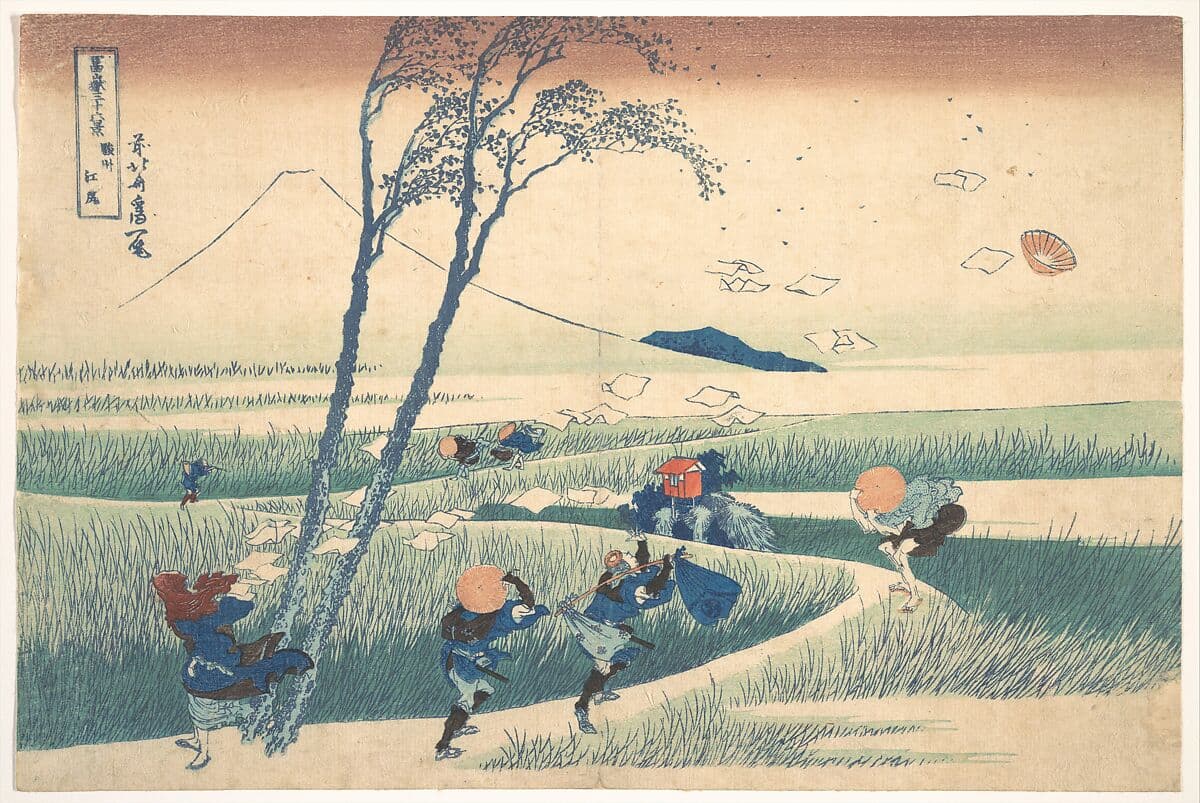
Hokusai: Thirty-six Views of Mount Fuji: Ejiri in Suruga Province (Sunshū Ejiri), ca. 1831-32 (New York: Met Museum)
Blackford picks up on the change between the frenetic foreground, where the wind has caused such turmoil, with the calmness of Mount Fuji, and how it might have been revealed by that same wind.
Richard Blackford: 7 Hokusai Miniatures – No. 3 Waterfalls (Solem Quartet)
In 1832, Hokusai published a series A Tour of Waterfalls in Various Provinces, including the Kirifuri Waterfall at Kurokami Mountain in Shimotsuke. This 75-meter-high waterfall breaks into two tiers. The name Kirifuri means ‘falling mist’ as seen at the bottom of the falls. Hokusai has captured the falls in autumn when the trees make a colourful frame to the falling waters.

Hokusai: A Tour of Waterfalls in Various Provinces: Kirifuri Waterfall at Kurokami Mountain in Shimotsuke, ca. 1832 (New York: Met Museum)
In his series A True Mirror of Chinese and Japanese Poetry, also known as A Realistic Mirror of Poets or Imagery of the Poets, Hokusai illustrated 10 well-known Chinese and Japanese poems. One of those, set on a snowy day, has the title A Traveler in the Snow and Chinese Official Pausing on a Bridge to View the Snow. There’s a stillness in his contemplation. The tree is laden with snow and small ducks endure the cold on the pond. The horse bows his head, impatient at the wait. Behind the traveller, a man covered in protective clothes holds cloth-wrapped packages. Down in the valley are two thatched roof houses in the style of those near Kyoto, built to withstand the heavy snowfall.
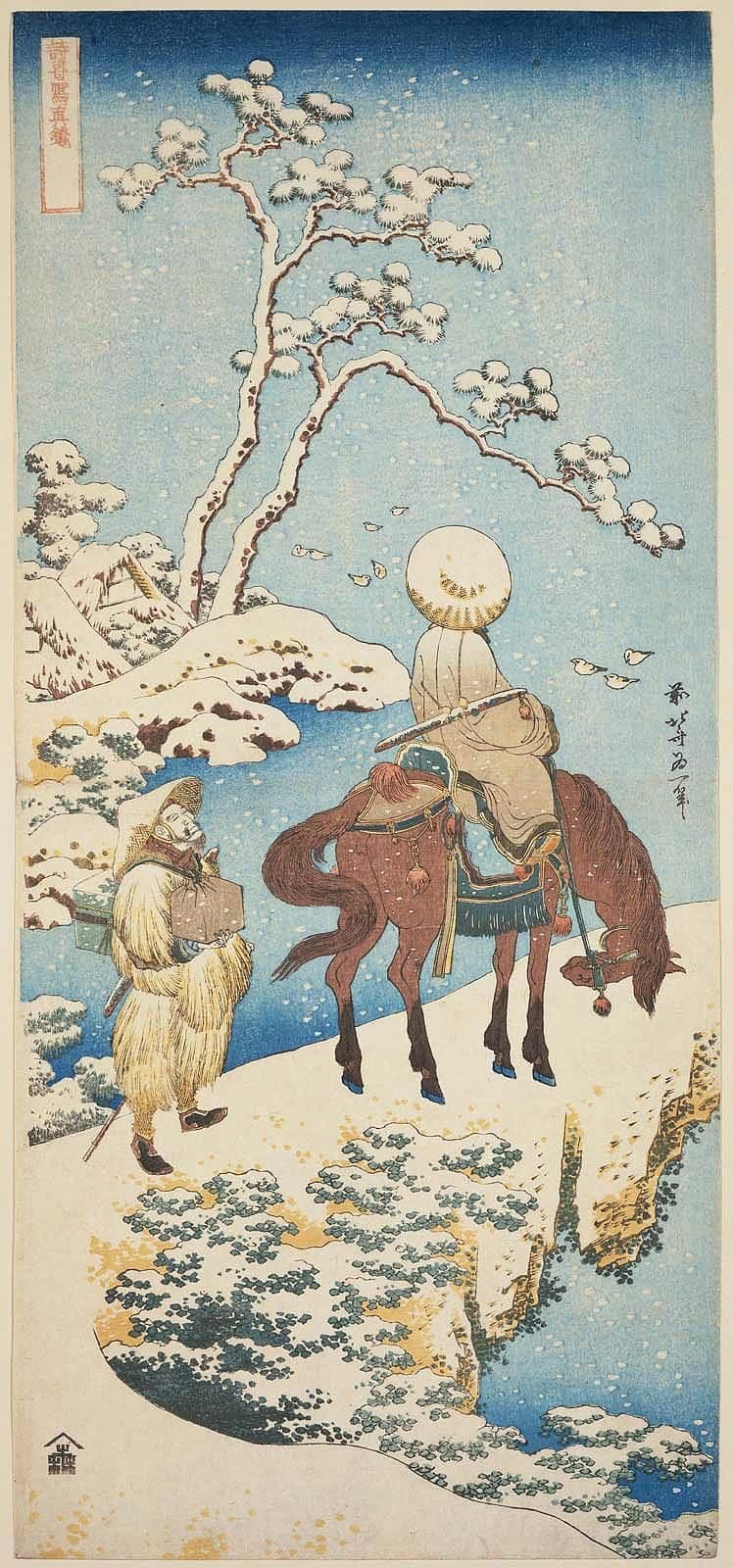
Hokusai: A True Mirror of Chinese and Japanese Poetry: Traveller in Snow, 1834-35 (Boston: Museum of Fine Art)
Blackford uses this still image as the calm centre of his work – the yearning for the departing friend.
Richard Blackford: 7 Hokusai Miniatures – No. 4 A Departing Friend In the Snow (Solem Quartet)
Ghosts in Japanese mythology are malevolent creatures, often indicating a wrongful death that must be revenged. Hokusai illustrated many ghost stories including this one of the unfortunate Oiwa, wife of the samurai Tamiya Aemon. Oiwa is given a poisonous face cream and her husband abandons her after her disfiguring. This sends her mad and, in her hysteria, she trips and falls on a sword. As she dies, she curses her husband, and then becomes a ghost, appearing in various forms, including a paper lantern.
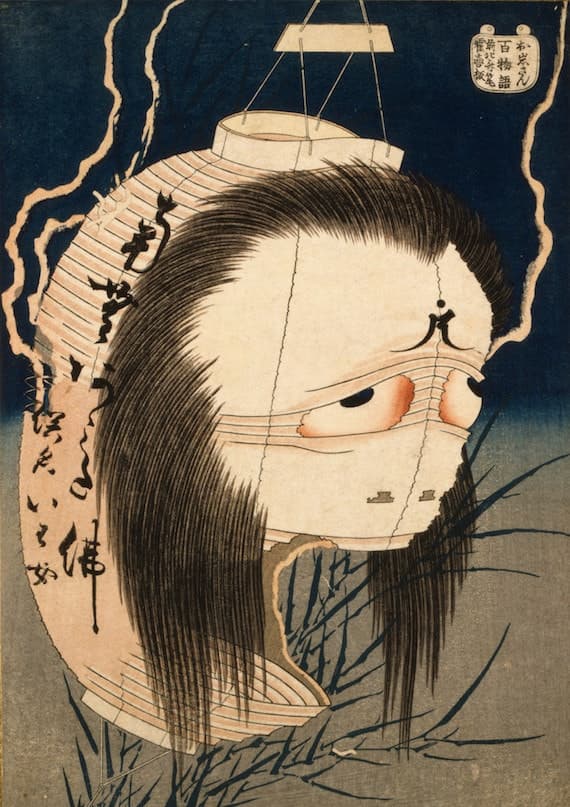
Hokusai: One Hundred Ghost Stories: Oiwa, 1831
Blackford plays up the ghostly specters with light touches on the string harmonics and slides down the violins.
Richard Blackford: 7 Hokusai Miniatures – No. 5 Ghosts (Solem Quartet)
In his series On Thousand Pictures of the Ocean, Hokusai shows the dangers of a storm at sea in A Wild Sea at Choshi. Two fishing boats negotiate the towering waves, seemingly going in different directions.
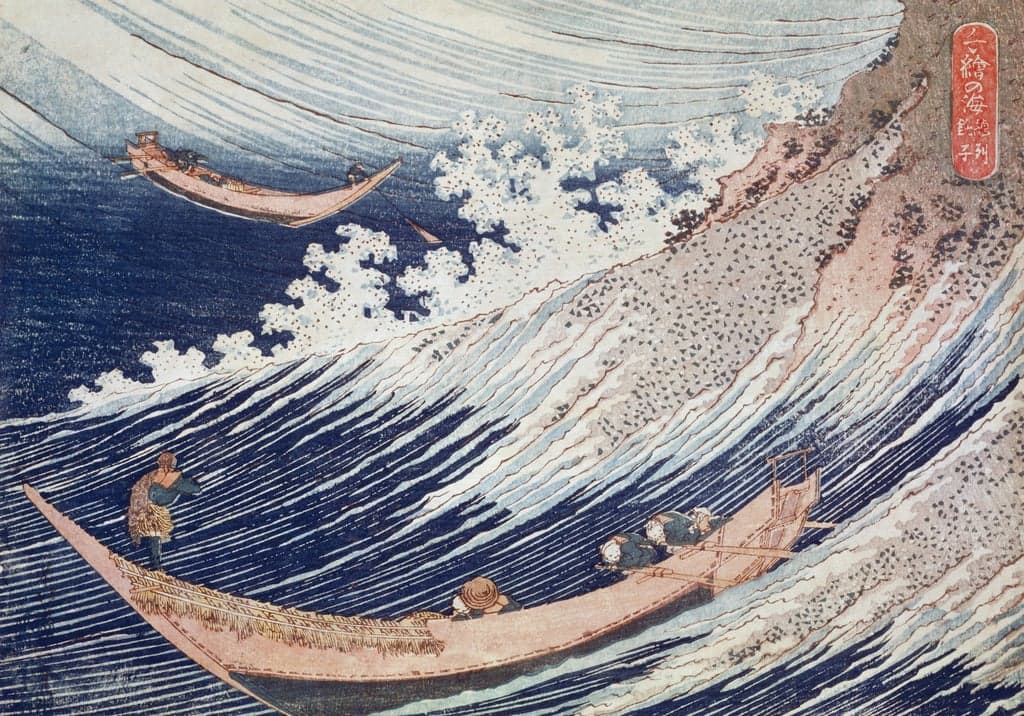
Hokusai: A Wild Sea at Choshi, 1833
The danger is all around – dissonance in the strings gives us that image and then the slides move us down that slippery wave into a new danger.
Richard Blackford: 7 Hokusai Miniatures – No. 6 A Wild Sea at Choshi (Solem Quartet)
The last painting used by Blackford returns us to a viewing of Mount Fuji, which Blackford entitles Admiring Mount Fuji at Sunset, but which is more commonly known as The Inume Pass in Kai Province. This location, in the modern-day Yamanashi prefecture, was on the Koshu Highway. Travelers are walking along in the bright green of early summer. They are not at the foot of Mount Fuji, but some distance away, as can be seen by the cloud that lies between the traveller’s hill and the mountain.
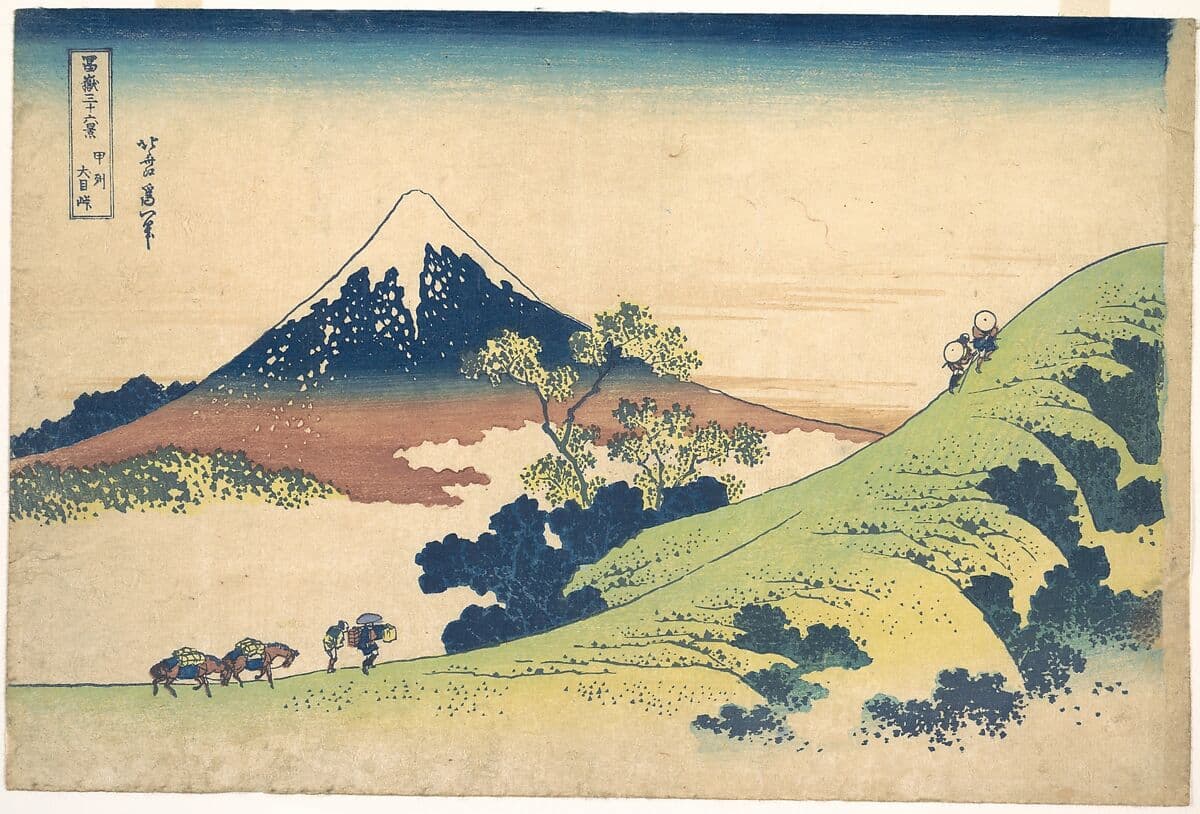
Hokusai: Thirty-six Views of Mount Fuji: The Inume Pass in Kai Province, ca. 1831-32 (New York: Met Museum)
We trudge up the hill, even our horses straining at the task. To the left, Mount Fuji, clothed in the colours of sunset, watches over our work.
Richard Blackford: 7 Hokusai Miniatures: No. 7 Admiring Mount Fuji At Sunset (Solem Quartet)
Hokusai made hundreds, if not thousands of Ukiyo-e images, and in selecting these seven, Richard Blackford has used them to paint his own audio picture of Japan’s landscapes, and seascapes, and give us images of town and country life. Starting in the first movement, Blackford composed a ‘Fuji theme’ that recurs in the inner movements, particularly in No. 2. The rising cello theme in No. 2 is extended in No. 6, and the viola theme of No. 3 becomes a counter theme to the Fiji theme in the last movement. Blackford said he was attempting ‘musical explorations of Hokusai’s flair for stylisation, humour, parody, the grotesque and calm, and it’s all here.
For more of the best in classical music, sign up to our E-Newsletter
